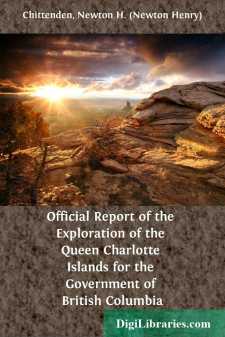Categories
- Antiques & Collectibles 13
- Architecture 36
- Art 48
- Bibles 22
- Biography & Autobiography 813
- Body, Mind & Spirit 142
- Business & Economics 28
- Children's Books 17
- Children's Fiction 14
- Computers 4
- Cooking 94
- Crafts & Hobbies 4
- Drama 346
- Education 46
- Family & Relationships 57
- Fiction 11829
- Games 19
- Gardening 17
- Health & Fitness 34
- History 1377
- House & Home 1
- Humor 147
- Juvenile Fiction 1873
- Juvenile Nonfiction 202
- Language Arts & Disciplines 88
- Law 16
- Literary Collections 686
- Literary Criticism 179
- Mathematics 13
- Medical 41
- Music 40
- Nature 179
- Non-Classifiable 1768
- Performing Arts 7
- Periodicals 1453
- Philosophy 64
- Photography 2
- Poetry 896
- Political Science 203
- Psychology 42
- Reference 154
- Religion 513
- Science 126
- Self-Help 84
- Social Science 81
- Sports & Recreation 34
- Study Aids 3
- Technology & Engineering 59
- Transportation 23
- Travel 463
- True Crime 29
Official Report of the Exploration of the Queen Charlotte Islands for the Government of British Columbia
Categories:
Description:
Excerpt
Geographical Position and Extent.
The Queen Charlotte Islands, the extreme north-western lands of British Columbia, lie in the Pacific Ocean, between fifty-one and fifty-five degrees of north latitude. They comprise over 150 islands, and islets, their length being 156 miles, and greatest width fifty-two miles. Provost, Moresby Graham and North Islands, extending north-westerly in the order mentioned, twelve, seventy-two, sixty-seven and five miles respectively, constitute over eighty per cent, of their entire area. Dixon Entrance on the north, with an average width of thirty-three miles, separates Graham Island from the Prince of Wales group of Alaska. Queen Charlotte Sound, from thirty to eighty miles in width, lies between them and the mainland of the Province. The nearest land is Stephen's Island, thirty-five miles east of Rose Spit Point, the extreme north-eastern part of Graham Island, and also of the whole group. Cape St. James, their most southern point, is one hundred and fifty miles northwest of Cape Scott, the northernmost land of Vancouver Island.
* * * * *
Discovery and Exploration,
The Queen Charlotte Islands were first discovered by Juan Perez, a
Spanish navigator, on the 18th of July, 1774, and named by him, Cabo
De St. Margarita, and their highest mountains, Sierra de San
Cristoval.
La Perouse coasted along their shores in 1786, and first determined their entire separation from the mainland. In 1787, Captain Dixon sailed off and on their north-west shores, with his vessel, the Queen Charlotte, naming the group, also North Island, Cloak Bay, Parry Passage, Hippa Island, Rennell Sound, Cape St. James, and Ibbitson's Sound, now known as Houston Stewart Channel. The first white men known to have landed upon the islands, were a portion of the crew of the Iphigenia, under command of Captain William Douglass, who remained about a week in Parry Passage in 1788, trading with the natives. The most extensive explorations made of any portion of the islands, by those early navigators, whose voyages for purposes of discovery, trade and adventure, extended into these northern seas, were those of Captain Etienne Marchand in the French ship Solide, who in 1791, examined the shores bordering on Parry Passage, and also about twenty miles of the west coast of Graham Island, from near Frederick Island southward. Since that date, although several parties of prospectors and others have visited various parts of the islands, no systematic effort has hitherto been made for the exploration of the entire group.
Under the direction of the Dominion Government, the waters and shores of the north and east coast of the islands including those of Massett Inlet and Sound, Naden Harbor and Skidegate Inlet, have been partially examined, and mapped with considerable accuracy; but almost the entire west coast, so far as the number, extent and character of its numerous indentations are concerned, has hitherto remained a terra incognita. Judge James G. Swan, who, under the direction of the U. S. Government, visited the islands in 1883, and voyaged in a canoe from Massett to Skidegate, gave in a lecture before the Provincial Legislature of British Columbia, the first public confirmation of the entrances to the inlets and harbors on the west coast of Graham Island, approximately, as reported by Captain Marchand....


